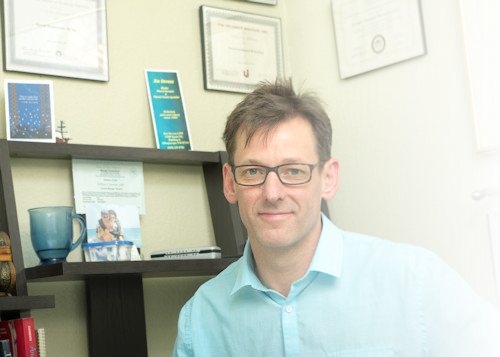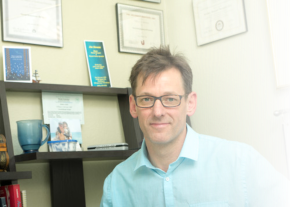
Jim Steven’s Blog
The Hierarchy of Tissues
May 2016 If you’re interested in a little more about what I’m thinking when conducting manual therapy for you -- read on. This post describes types of tissues in your body and their function and how they relate to your health and pain you may be experiencing. If you have questions during your manual therapy, let me know.



“A tissues importance depends on both its probable effects on
other tissues and the systemic qualities of its anatomy.”
This being stated we have laid out a hierarchy of tissues from most to least importance
as it applies to freeing lesions within the body. It must be understood that that far more
important than our intellectual understanding of these things, is our willingness to
“always trust the tissues”. The tissues themselves have neither the ability nor the
desire to mislead us, where our reason and logic often do.
Our understanding leads us to believe that the majority of pain and immobility within
the human body is, for the most part, the body protecting itself. In other words, “pain
should be viewed as a protective ideal or as a defense mechanism.“ Some tissues
receive more protection than others do, based on what we refer to as the “Reflexogenic
effect”. The Reflexogenic effect states that the body will shut down any movement
pattern that has the potential to further damage or inflame the protected tissues. As an
example a nerve cell has limited regenerative ability, therefore it must remain
functioning for an entire lifetime. The body will create immobility in order to prevent
further damage to the neural tissues.
From this thinking comes the theory of the ‘Hierarchy of Tissues’. Stating, “Any
tissues that are of greater importance to the body’s survival, will be protected by the
tissues of a lesser importance“. All chronic pain is caused by a reduction of blood flow.
This blood supply may be limited to the activated pain receptor nerve, or to the
surrounding tissues, causing localized dehydration and inflammation. It is for this
reason we agree with the Osteopathic principle that “The artery is supreme.”
Artery / Vein:
Blood flow is paramount to all cells, as all tissues rely on the oxygen, nutrients,
and waste removal carried out by the cardio-vascular system. An artery may be
compressed, impinged, or stressed. When an artery is stressed, the smooth
muscle contracts, thereby decreasing the diameter of the artery. Any lesions
within or near the artery will therefore cause reduction in blood flow to all
points distally along the arterial pathway, thereby affecting any tissues present.
The veins, while of less importance can also be compressed causing a reverse
pressure into the capillary beds, arterial, and lymphatic systems. This causes a
reduction in blood supply, by creating congestion.
Nervous Tissue, Cerebral Spinal Fluid, Nerves (spinal and cranial) and Brain:
Neural response is a necessary function for nearly every cell in the body. The
nerve cells, though well protected in their adipose and connective tissue
sheathes, are easily entrapped at the point they enter or exit another tissue. This
restriction causes budding (rupture), and inflammation, thereby preventing the
nerve from moving and protecting the nerve from further damage. The
importance of the nervous tissue cannot be understated. These tissues are highly
protected by what we call the “Reflexogenic effect“. The brain and spinal cord
tissues are also susceptible to inflammation and adhesions, either to the
surrounding Mata, or within the brain itself. When these lesions occur, they limit
the CFS from fully nourishing the tissue thereby depleting its functionality.
Ligament / Suspensory ligament:
Ligaments are generally identified as a thick connective tissue that holds bone to
bone at the joints or bony articulations. In the case of an injury to these
ligaments, there is obvious compensation throughout the body to aid in avoiding
pain and further damage to the injured tissues. We almost consciously change
our gait, or use a different arm in order to protect and prevent further damage.
A suspensory ligament by contrast is any thickening of the connective tissue
membrane that attaches and holds any organ to another tissue or organ; they are
most common in the viscera of the internal organs. Any tissue that connects one
tissue to another or creates a tunnel (i.e. a retinaculum) through which a vessel
or tendon moves should be considered a ligament.
Fascia:
We view the fascia as one continuous whole and is connected to and part of all
other tissues. Any lesion within the facial matrix must therefore effect all
surrounding tissues as well as the tissues along its lesional chain, specifically
those portions of the fascial sheaths that share fibers.
Lymphatic:
The passive portion of the circulatory system may be viewed as important as the
blood vessels themselves. Its systemic nature and its presence within every organ
and nearly every tissue, creates a vulnerability in which the smallest of lesions or
pathology can cause disruption anywhere in the body.
Sphincters and Valves:
Sphincters are the valves within or conjoining to the alimentary canal. Just one
sphincter working incorrectly can cause dysfunction within the entire digestive
system. It can affect the internal pressures in both the abdomen and thorax,
thereby creating lesions disrupting movement patterns throughout the body.
Please do not underestimate the importance of these sphincters, it has been
stated that these sphincters should be the first area of evaluation, or in the case
of time restraints, the only treatment. Similarly, if the valves of the heart are
strained they cannot function optimally, thus influencing the vast majority of the
body’s functions.
Viscera (Organ systems):
Internal organs, designed to glide across one another and to move in easy
patterns that aids in their function. When organs are immobilized completely or
in part due to lesions or adhesions, the biomechanical and physiological effects
are staggering. The abdominal peritoneum has almost no value to modern
medicine. We feel the peritoneum should be considered as, and treated as an
organ unto itself. Although it does not so much have “a” function as an organ,
lesions within the peritoneum often have a negative biomechanical affect on
abdominal and thoracic organs, as well as abdominal, thoracic, and cranial
vasculature.
Periosteum:
As the interface between bone and soft tissue, any lesion within the periosteum
will affect all interfaces directly related to the bone. Conversely, any soft tissue
lesion must reflect into the periosteum. As the surrounding connective tissue of
the bone, any neural or vascular lesion occurring within the interface of the bone
itself will most likely be at this level.
Bone:
Bones are a great holder of trauma. When applied force, through injury or
accident is driven into the bony matrix, trauma results. The effected portion of
the bone becomes hard and inflexible. This inflexibility reduces the bones ability
to absorb shock, thereby increasing the possibility of fracture, torn ligaments, or
injury elsewhere in the body.
Tendon:
A tendon is essentially the entire connective tissue of a particular muscle coming
into one cumulative whole as it connects to the periosteum of the bone.
Therefore, we consider working with this portion of the soft tissue to be more
effective than working within the muscle itself.
Muscle:
Muscles are seldom the root cause of tension within the body, except for cases of
overuse as in the case of exercise and fatigue. Few muscles can have any “great
affect” on the surrounding tissues. The two most well known muscles of this
variety are the subclavius and the illio-psoas. However it is our belief that muscle
pain, discomfort, and even injury is due to a cause outside of the muscle itself.
For this reason, we consider muscles to be of less importance than the other
tissues. Releasing or softening muscles does give the body momentary relief,
there is no doubt. The relief is often short lived, because the root cause or lesion
that the tight muscles were protecting has not yet been addressed.
Adipose:
Adipose is more commonly known as fat. Although this tissue can cold lesions,
(i.e. cellulite) lesions within this tissue are generally isolated and do not have
much if ant affect on neighboring tissues. Healthy adipose is soft and pliable,
which allows it to move well even with lesions.






© 2022, Jim Stevens Manual Therapy

Master Manual Therapist & Physical Trauma Specialist
Relieving pain and injury since 1994


Jim
Steven’s
Blog
The Hierarchy of
Tissues
May 2016 If you’re interested in a little more about what I’m thinking when conducting manual therapy for you -- read on. This post describes types of tissues in your body and their function and how they relate to your health and pain you may be experiencing. If you have questions during your manual therapy, let me know.









“A tissues importance depends on
both its probable effects on other
tissues and the systemic qualities of
its anatomy.”
This being stated we have laid out a hierarchy of
tissues from most to least importance as it applies
to freeing lesions within the body. It must be
understood that that far more important than our
intellectual understanding of these things, is our
willingness to “always trust the tissues”. The
tissues themselves have neither the ability nor the
desire to mislead us, where our reason and logic
often do.
Our understanding leads us to believe that the
majority of pain and immobility within the human
body is, for the most part, the body protecting itself.
In other words, “pain should be viewed as a
protective ideal or as a defense mechanism.“ Some
tissues receive more protection than others do,
based on what we refer to as the “Reflexogenic
effect”. The Reflexogenic effect states that the body
will shut down any movement pattern that has the
potential to further damage or inflame the
protected tissues. As an example a nerve cell has
limited regenerative ability, therefore it must
remain functioning for an entire lifetime. The body
will create immobility in order to prevent further
damage to the neural tissues.
From this thinking comes the theory of the
‘Hierarchy of Tissues’. Stating, “Any tissues that
are of greater importance to the body’s survival,
will be protected by the tissues of a lesser
importance“. All chronic pain is caused by a
reduction of blood flow. This blood supply may be
limited to the activated pain receptor nerve, or to
the surrounding tissues, causing localized
dehydration and inflammation. It is for this reason
we agree with the Osteopathic principle that “The
artery is supreme.”
Artery / Vein:
Blood flow is paramount to all cells, as all
tissues rely on the oxygen, nutrients, and
waste removal carried out by the cardio-
vascular system. An artery may be
compressed, impinged, or stressed. When an
artery is stressed, the smooth muscle
contracts, thereby decreasing the diameter of
the artery. Any lesions within or near the
artery will therefore cause reduction in blood
flow to all points distally along the arterial
pathway, thereby affecting any tissues
present. The veins, while of less importance
can also be compressed causing a reverse
pressure into the capillary beds, arterial, and
lymphatic systems. This causes a reduction in
blood supply, by creating congestion.
Nervous Tissue, Cerebral Spinal Fluid, Nerves
(spinal and cranial) and Brain:
Neural response is a necessary function for
nearly every cell in the body. The nerve cells,
though well protected in their adipose and
connective tissue sheathes, are easily
entrapped at the point they enter or exit
another tissue. This restriction causes
budding (rupture), and inflammation, thereby
preventing the nerve from moving and
protecting the nerve from further damage.
The importance of the nervous tissue cannot
be understated. These tissues are highly
protected by what we call the “Reflexogenic
effect“. The brain and spinal cord tissues are
also susceptible to inflammation and
adhesions, either to the surrounding Mata, or
within the brain itself. When these lesions
occur, they limit the CFS from fully
nourishing the tissue thereby depleting its
functionality.
Ligament / Suspensory ligament:
Ligaments are generally identified as a thick
connective tissue that holds bone to bone at
the joints or bony articulations. In the case of
an injury to these ligaments, there is obvious
compensation throughout the body to aid in
avoiding pain and further damage to the
injured tissues. We almost consciously change
our gait, or use a different arm in order to
protect and prevent further damage.
A suspensory ligament by contrast is any
thickening of the connective tissue membrane
that attaches and holds any organ to another
tissue or organ; they are most common in the
viscera of the internal organs. Any tissue that
connects one tissue to another or creates a
tunnel (i.e. a retinaculum) through which a
vessel or tendon moves should be considered
a ligament.
Fascia:
We view the fascia as one continuous whole
and is connected to and part of all other
tissues. Any lesion within the facial matrix
must therefore effect all surrounding tissues
as well as the tissues along its lesional chain,
specifically those portions of the fascial
sheaths that share fibers.
Lymphatic:
The passive portion of the circulatory system
may be viewed as important as the blood
vessels themselves. Its systemic nature and its
presence within every organ and nearly every
tissue, creates a vulnerability in which the
smallest of lesions or pathology can cause
disruption anywhere in the body.
Sphincters and Valves:
Sphincters are the valves within or conjoining
to the alimentary canal. Just one sphincter
working incorrectly can cause dysfunction
within the entire digestive system. It can
affect the internal pressures in both the
abdomen and thorax, thereby creating lesions
disrupting movement patterns throughout the
body. Please do not underestimate the
importance of these sphincters, it has been
stated that these sphincters should be the first
area of evaluation, or in the case of time
restraints, the only treatment. Similarly, if the
valves of the heart are strained they cannot
function optimally, thus influencing the vast
majority of the body’s functions.
Viscera (Organ systems):
Internal organs, designed to glide across one
another and to move in easy patterns that
aids in their function. When organs are
immobilized completely or in part due to
lesions or adhesions, the biomechanical and
physiological effects are staggering. The
abdominal peritoneum has almost no value to
modern medicine. We feel the peritoneum
should be considered as, and treated as an
organ unto itself. Although it does not so
much have “a” function as an organ, lesions
within the peritoneum often have a negative
biomechanical affect on abdominal and
thoracic organs, as well as abdominal,
thoracic, and cranial vasculature.
Periosteum:
As the interface between bone and soft tissue,
any lesion within the periosteum will affect
all interfaces directly related to the bone.
Conversely, any soft tissue lesion must reflect
into the periosteum. As the surrounding
connective tissue of the bone, any neural or
vascular lesion occurring within the interface
of the bone itself will most likely be at this
level.
Bone:
Bones are a great holder of trauma. When
applied force, through injury or accident is
driven into the bony matrix, trauma results.
The effected portion of the bone becomes
hard and inflexible. This inflexibility reduces
the bones ability to absorb shock, thereby
increasing the possibility of fracture, torn
ligaments, or injury elsewhere in the body.
Tendon:
A tendon is essentially the entire connective
tissue of a particular muscle coming into one
cumulative whole as it connects to the
periosteum of the bone. Therefore, we
consider working with this portion of the soft
tissue to be more effective than working
within the muscle itself.
Muscle:
Muscles are seldom the root cause of tension
within the body, except for cases of overuse as
in the case of exercise and fatigue. Few
muscles can have any “great affect” on the
surrounding tissues. The two most well
known muscles of this variety are the
subclavius and the illio-psoas. However it is
our belief that muscle pain, discomfort, and
even injury is due to a cause outside of the
muscle itself. For this reason, we consider
muscles to be of less importance than the
other tissues. Releasing or softening muscles
does give the body momentary relief, there is
no doubt. The relief is often short lived,
because the root cause or lesion that the tight
muscles were protecting has not yet been
addressed.
Adipose:
Adipose is more commonly known as fat.
Although this tissue can cold lesions, (i.e.
cellulite) lesions within this tissue are
generally isolated and do not have much if
ant affect on neighboring tissues. Healthy
adipose is soft and pliable, which allows it to
move well even with lesions.



© 2022, Jim Stevens Manual Therapy



Master Manual
Therapist & Physical
Trauma Specialist
Relieving pain and
injury since 1994

























